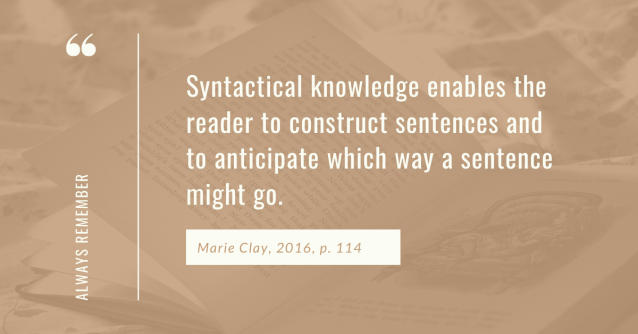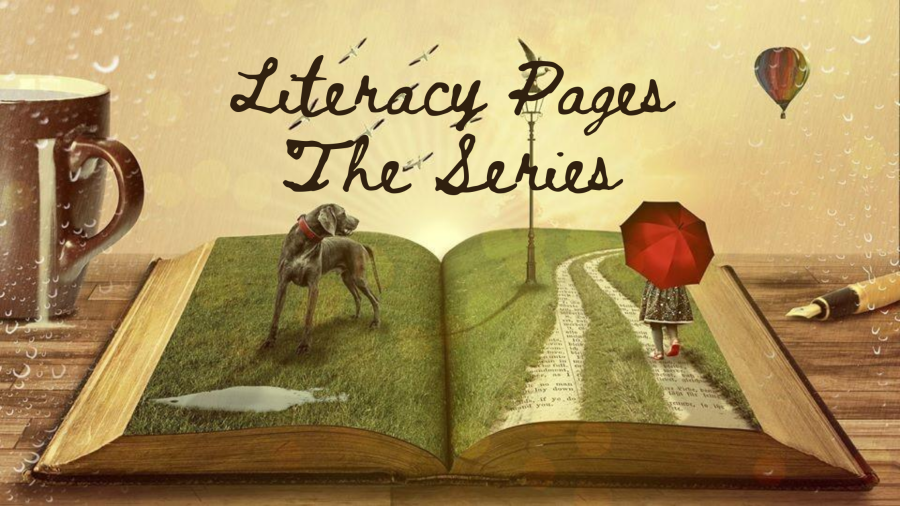Literacy Pages: The Series presents the forth post in an 8-post series related to Reading Recovery and Teaching with Discontinuation in Mind from Early Lessons. Click below to check out our previous post.
Self-Extending Systems: Teaching with Discontinuation and Independence in Mind
Part 1: Actively Self-monitoring
Part 2: Searching for Different Kinds of Information
When working toward acceleration of our students’ reading and writing progress I think that it is worth asking ourselves if we give language structure as much value, thinking, and planning as we give visual and meaning sources of information. In her article, Put Your Ear a Little Closer, Megan Dixon (2014) writes, “if understanding or constructing the message is a challenge, then as effective teachers, it is essential that we understand how to strategically develop a child’s oral language skills to support literacy acquisition”.
In order to mindfully and intentionally plan for developing a child’s oral language we should think about things such as:
- vocabulary
- sentence complexity
- sentence structure
- Parts of speech (adjectives, pronouns, prepositions, etc.)
Clay (2016) writes about the importance of oral language in relation to reading and writing.

The Record of Oral Language
It is helpful to use Marie Clay’s The Record of Oral Language to take a closer look at a student’s oral language before beginning roaming around the known. The information that we gather from this assessment helps us to make appropriate book selections durinf roaming and when moving into lessons.
The phrases our students use in their oral language leads to more awareness of how words are ordered. The knowledge of a variety of oral language structures helps students predict what comes next in their reading and helps them compose a sentence when writing.
Clay recommends that we should occasionally write down a student’s longest utterance. This informs us about what vocabulary and oral language he/she controls, what complexity to expect from the student during writing, what to teach and what to extend in his/her oral language, and how oral language is changing over time.
Studies have shown that the strongest cues in the reading of “good” readers came from their oral language. The errors made by “poor” readers were more often led by the use of visual information and neglected the use of context and grammar. The “poor” readers were also less likely to work at the phrase or sentence level (Clay, 2015).
Early lessons
Our students gain more knowledge about what book language sounds like in early levels. At first, they will need some time to gain control over the language. They will benefit from rehearsing it and listening to how it sounds.
When transitioning from patterned texts to texts with a story we may need to provide additional support for some students who have a limited understanding of stories and book language. Detailed procedures for this high level of support can be found in Literacy Lessons Designed for Individuals on page 116 and should be used for a short period of time.
Reading
As our students read volumes of texts, they will grow to have the book knowledge needed to read a variety of genres. Over time, our students will write sentences that are longer, use more varied language and vocabulary, and have more complex sentence structures.

Writing
Both reading and writing provide ample opportunities to extend our students’ oral language abilities. During writing, the conversations and the creation of messages leads to the growth of knowledge about acceptable language structures. The conversations should be student-centered, authentic and genuine in order for students to take ownership of their message. We can help students work toward increasing the complexity of their sentences by encouraging them to elaborate on their stories by adding who, what, why, when, and where, and adding conjunctions like because, and, or so.
Dixon gives us an important reminder, “once the sentence has been formed, it is not the time to correct the grammar . The development of the syntax of the language came within the composing conversation, as the teacher worked the syntactic structure into her conversation” (p.23).
In Summary
When working toward acceleration, we can’t neglect the importance of building oral language for continued progress in reading and writing. Before working with any student it is helpful to administer The Record of Oral Language – rather than waiting for signs of trouble. Then we can provide the right amount of support for building vocabulary, increasing sentence length and complexity right from the beginning of our time with a student.
Resources:
Dixon M. “Put Your Ear a Little Closer: Tuning In to a Child’s Language to Aid Literacy Acquisition.” The Journal of Reading Recovery, Spring (2014): 16-25.
Clay, M.M. (2015). Becoming literate: The construction of inner control (2nd ed.). Portsmouth, NH: Heinemann.
Clay, M. M. (2015). Change over time in children’s literacy development (2nd ed.). Portsmouth, NH: Heinemann.
Clay, M. M. (2016). Literacy lessons designed for individuals (2nd ed.). Portsmouth, NH: Heinemann.

Pingback: Part 4: Rereading to Confirm